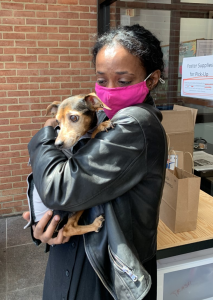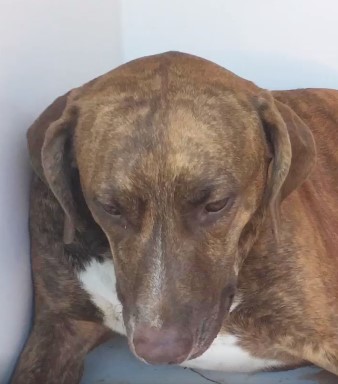Module 6: Integration of shelter and community healthcare programs for at-risk pets
In-Shelter Support Care Programs
Animal shelters are seeing more and more pets with deferred care or no care being relinquished with treatable medical conditions. An integral part of the HASS sheltering model is the In-Shelter Care Program. This is a shelter-based access-to-care program to prevent pet relinquishment due to urgent medical needs when the shelter can legally provide medical care that the owner cannot afford elsewhere. The shelter can intervene by providing cost-effective, resource-efficient incremental medical care directly to the pet, thereby eliminating the need to surrender the animal for services. In-Shelter Care is patient-centered, incremental care for acute medical conditions and injuries that can be managed with a “one and done” treatment plan, not a continual care program to manage chronic conditions.
In the webinar below, 5 shelter medicine leaders outline the 3 phases of an in-shelter medical care program, selection of cases, and how the shelter medical team can incorporate this program into their daily workflow. This shelter veterinary service supports the HASS element of providing medical care that keeps pets in their homes, not in the shelter.
The presenters:
- Dr. Chumkee Aziz completed a shelter medicine residency at UC-Davis, is ABVP board-certified in Shelter Practice, and is the Outreach Veterinarian in the UC-Davis Koret Shelter Medicine Program. Dr Aziz is also the past President of the Association of Shelter Veterinarians.
- Dr. Elizabeth Berliner is ABVP board-certified in both Canine/Feline Practice and Shelter Practice, was the Director of the Maddie’s Shelter Medicine Program at Cornell University College of Veterinary Medicine for many years, and is currently a Senior Director for Shelter Medicine Services at the ASPCA.
- Dr. Erin Katribe is the Medical Director for Best Friends Animal Society and completed the MS degree in Shelter Medicine at UF.
- Dr. Lisa Labrecque is Director of Veterinary Services at the Humane Society of Sonoma County in California.
- Dr. Lauren Overman completed a shelter medicine internship at Oregon Humane Society and is the Vice President and Director of Veterinary Services at the Humane Society of Southwest Washington in Vancouver, Washington.
Watch This
Focus Guide for Why Access to Animal Care Resources is a Social Justice Issue (1:01:28)
- 2:44 to 4:50: Intro to presenters and the HASS In-Shelter Support Care Program
- 4:58 to 6:39: Intake intervention for animals surrendered to shelters due to health conditions
- 6:42 to 11:03: Foundational guiding principles for mission and goals
- All animals deserve access to medical care
- Client- and patient-centered care
- Incremental care
- Budget neutral
- Safeguard life and quality of life
- Create partnerships
- Community resource center
- Support shelter staff and operations
- Stay within legal statutes and professional guidelines or engage in changing them
- 11:05 to 12:14: Three HASS models for providing care to owned animals to promote pet retention
- Utilize existing practices in the community
- Start a practice from scratch
- Provide in-shelter medical care
- Organizations can provide a mixed approach containing more than one of these models
- 12:25 to 13:16: In-shelter medical program benefits
- Serve as a safety net for life-saving within the community
- Reduce pet relinquishment
- Keep shelter care costs down
- Support the human-animal bond
- Transforms shelters into a resource center rather than a rehoming center
- 13:17 to 14:35: Needs-based incremental care provided by the shelter vet and staff
- Animals at risk for relinquishment or euthanasia due to illness or injury
- Provide “one and done” care, not continued treatment for chronic conditions
- Reallocation of already existing medical care resources
- 14:40 to 17:50: Skip
- 17:52 to 26:13: Phase One: Planning
- Identify a case manager
- Allocate a start-up budget and create a business plan
- Create a staffing plan and training plan
- Draft a workflow chart
- Develop financing options for the cost of care
- Create incremental care SOPs based on spectrum of care options for conditions commonly seen in animals admitted to the shelter
- Create standard forms such as intake and treatment consent forms, discharge forms
- Define and document what you can realistically do well and start with that
- 26:15 to 29:03: Defining the scope of what you can do
- Determine what medical conditions cause risk for pet relinquishment to your shelter
- What are the Top 5 medical interventions you already do? (Skin/ear problems, fractures, foreign body ingestion, pyometra, wounds, dental disease)
- Focus on acute conditions (one and done treatment) to start
- Must have SOPs for efficiency and consistency
- 29:05 to 31:25: Skip
- 31:28 to 35.24: Phase One: Planning (continued)
- Staff education on the program
- Inform local stakeholders, especially local vets
- Modify the shelter medical records system if needed
- Create a system to dispense meds to pet owners – legal requirements
- Create a plan to track data and impact
- Create a system for emergency care access for discharged patients
- 35:30 to 38:10: Phase Two: Implement and Refine
- Choose a start date
- Start small for best success, then build in a stepwise manner
- Collect resources (forms, discharge instructions, VIN, etc)
- Refine your entry point (what type of cases you accept and what sources they originate from)
- Refine your internal and external talking points to answer questions and communicate to community stakeholders about the program
- 38:15 to 41:36: Phase Three: Track Success and Challenges and Create Sustainability
- Create a spreadsheet template for recording data
- Record quantitative data (#clients/patients, # surgeries, # dentals, # procedures, # of pets saved from relinquishment, cost of services)
- Record success stories
- 41:38 to 43:38: What does success look like?
- Program fits within the daily workflow of the medical team
- Financially sustainable
- Meets legal requirements
- Decreased number of pets surrendered to the shelter
- 43:40 to 47:54: Potential Challenges
- Consumes too much staff time and labor – this is reduced by good planning and defining scope of services (start small)
- Difficult communications with clients – you may be able to treat some of their pet needs, but not all of them. Communicate clearly about what you can do and what resource there is for other care
- Emotionally and physically draining – need a good case manager who focuses solely on the program
- Compassion fatigue
- 48:05 to 1:01:28: FAQs for Shelter Vets
- How do we account for any additional staffing to meet the needed medical capacity?
- Do we really need to hire a case manager?
- How can we provide quality cost-effective medical care?
- How can we make this program sustainable?
- Will everyone start coming to the shelter for treatment of their pets?
- What legal issues should we consider?
- How do we work collaboratively with local practitioners?
- Are we losing potential adoption revenue by diverting admission of surrendered pets?
- Should spay/neuter be required for animals served by this program?
Here is a one-page synopsis of the In-Shelter Support Care Program
Here are examples of an in-shelter support care program in action.

Rita and Saron’s story: When senior dog Rita was sick with a fever, her owner Saron rushed her to the vet, where she discovered Rita had an infected uterus and needed a very expensive emergency surgery. Before, Saron might have needed to surrender Rita to the shelter to get her the care she needed. Now, with shelters using the HASS model to keep people and pets together, Saron had another option. Saron reached out to Humane Rescue Alliance, and the shelter’s team was able to quickly perform Rita’s lifesaving surgery. Thanks to Saron’s problem-solving, Rita is back home—happy and healthy.
Watch This
Watch This


